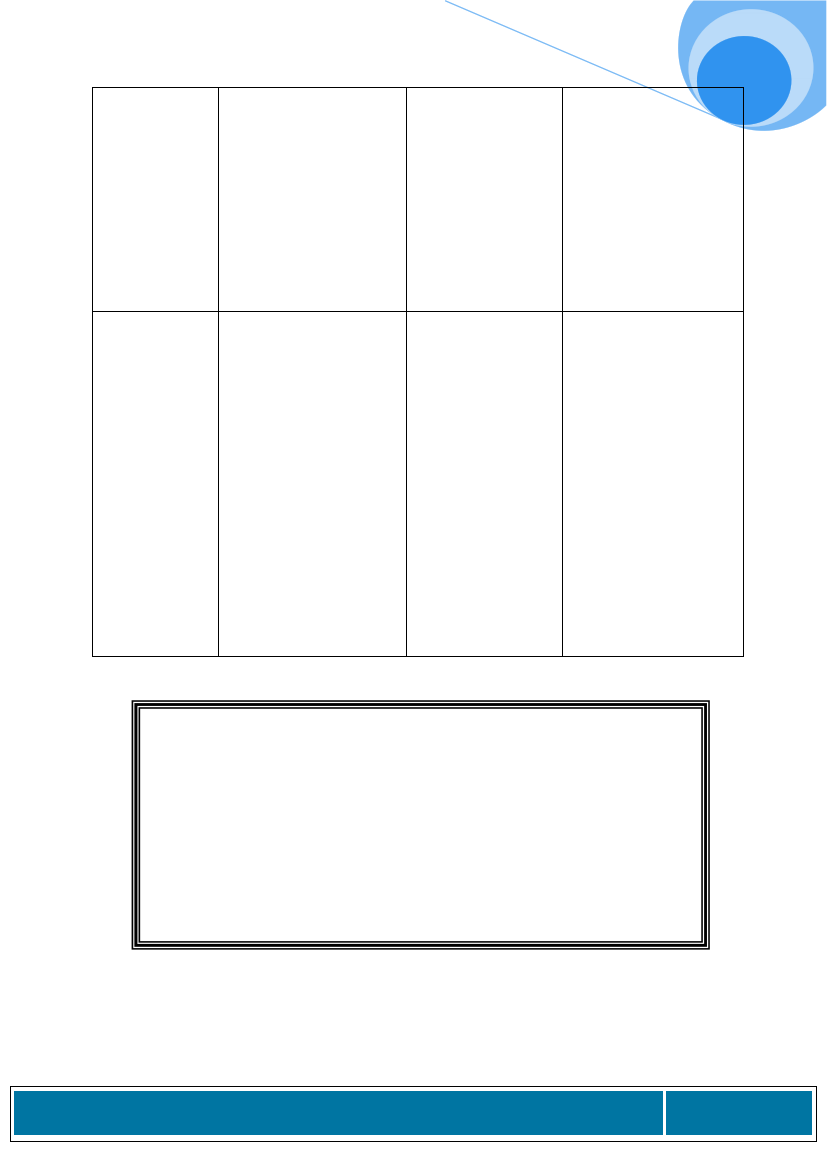
MAINSTREAMING CLIMATE CHANGE ADAPTATION IN AGRICULTURAL EXTENSION
involvement of the
right mix of
stakeholders
2012
Communicating
and reporting
results
This involves
understanding the
audience for the
information. Need to
establishment of the
information needs of the
different stakeholders
involved in the project.
For a LCDRR project,
stakeholders range from
the District Administrator,
members of the Disaster
Management
Committees, Local
Development Agencies –
they all need to know
what is coming out of the
initiative.
Project coordinating
teams at community,
district and
provincial level.
Sometimes, the
National Level, such
as the Civil
Protection Unit
needs to know what
changes are
happening on the
ground as a result of
new approaches
and new ways of
doing things.
Mechanisms for
spreading good
practices are developed
and accessible to all
interested actors.
Task:
2. In small groups, participants discuss and define the terms monitoring
and evaluation, giving practical, real life examples from their work. They
should discuss why these should be undertaken, when and how. Can
communities conduct these activities? Which evaluation methods are
they aware of?
3. In small groups participants discuss the current challenges in monitoring
and evaluation and how these can be overcome
A Training Manual on Use of Climate Information and Vulnerability and Capacity Assessment for
Agricultural Extension Staff in Zimbabwe
Page 99